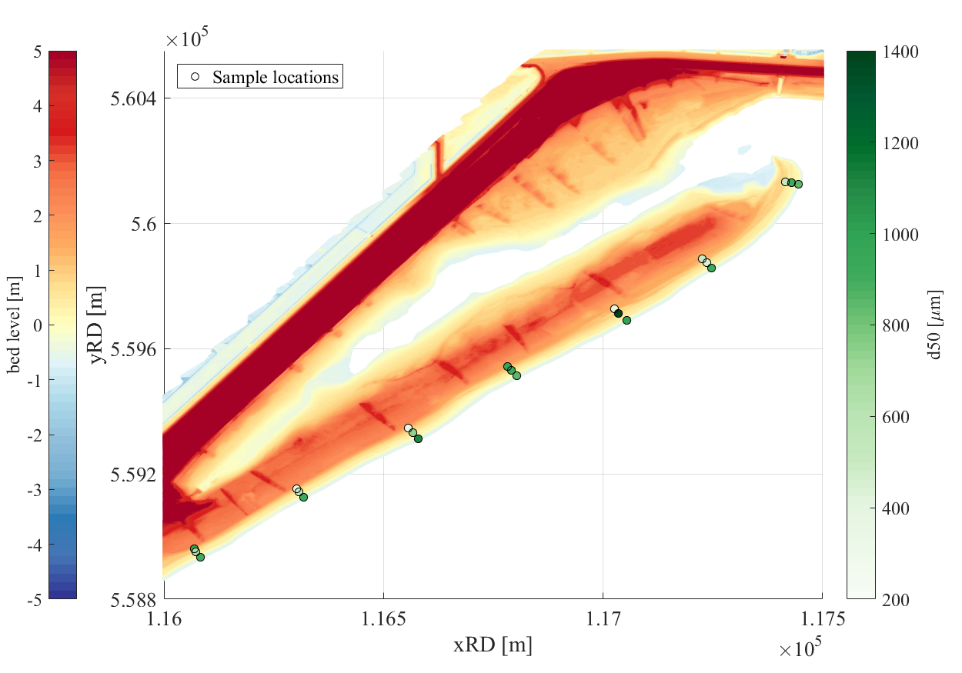R. Hoegen1,*, T. D. Price1, H. E. de Swart1, M. van der Vegt1
1 Utrecht University
*corresponding author: This email address is being protected from spambots. You need JavaScript enabled to view it.
Introduction
The placement of sandy beaches in front of dunes is increasingly used as coastal protection in favour of hard engineering structures along sandy coasts. These so-called soft-solutions are often economically and ecologically more sustainable as these structures are adaptable and can self-repair after storm events. Until recently, all of these soft solutions were constructed on wave-dominated coasts. However, this approach has started to be used to improve weak flood defences, such as dikes and dams, in regions that are not necessarily wave-dominated. In 2019 an artificial sand dike was constructed at the back-barrier side of the Dutch island of Texel, the Prins Hendrikzanddijk (PHZD; Perk et al., 2019). As this coastal defence structure lies in a mixed wave-tide environment, it is important to assess the role of different drivers (waves, tides, wind) and processes (suspended load, bed load) on the sediment transport under the range of environmental conditions encountered in such environments (e.g. spring-neap tides, fair weather, storms). Moreover, the spatial heterogeneity of the artificially placed bed sediment should be taken into account for the understanding of both the morphological and ecological impact of such sandy interventions (Figure 1; Huisman et al., 2018). This study aims to characterise how the hydrodynamic boundary conditions and bed sediment composition influence the sediment transport patterns at the PHZD through numerical modelling.
Approach
Results will be shown of simulations performed with a calibrated Delft3D-SWAN model of the PHZD area. For the calibration, data were used that were collected during a 6-week field campaign (SEDMEX; mixed SEDiments in Mixed Energy eXperiment) in September-October 2021. Relevant model parameters, forcing input and initial bed composition will be systematically varied to evaluate their individual influence in sediment transport patterns.

Figure 1: Bed level of the northern part of the Prins Hendrikzanddijk (wadden coast of Texel). The green shaded circles indicate the d50 of sediment samples collected during the pilot field campaign.
References
Huisman, B. J. A., Ruessink, B. G., de Schipper, M. A., Luijendijk, A. P., & Stive, M. J. F. (2018). Modelling of bed sediment composition changes at the lower shoreface of the Sand Motor. Coastal Engineering, 132, 33–49. https://doi.org/10.1016/j.coastaleng.2017.11.007
Perk, L., van Rijn, L., Koudstaal, K., Fordeyn, J. A. (2019). Rational Method for the Design of Sand Dike/Dune Systems at Sheltered Sites; Wadden Sea Coast of Texel, The Netherlands. J. Mar. Sci. Eng., 7, 324. https://doi.org/10.3390/jmse7090324










